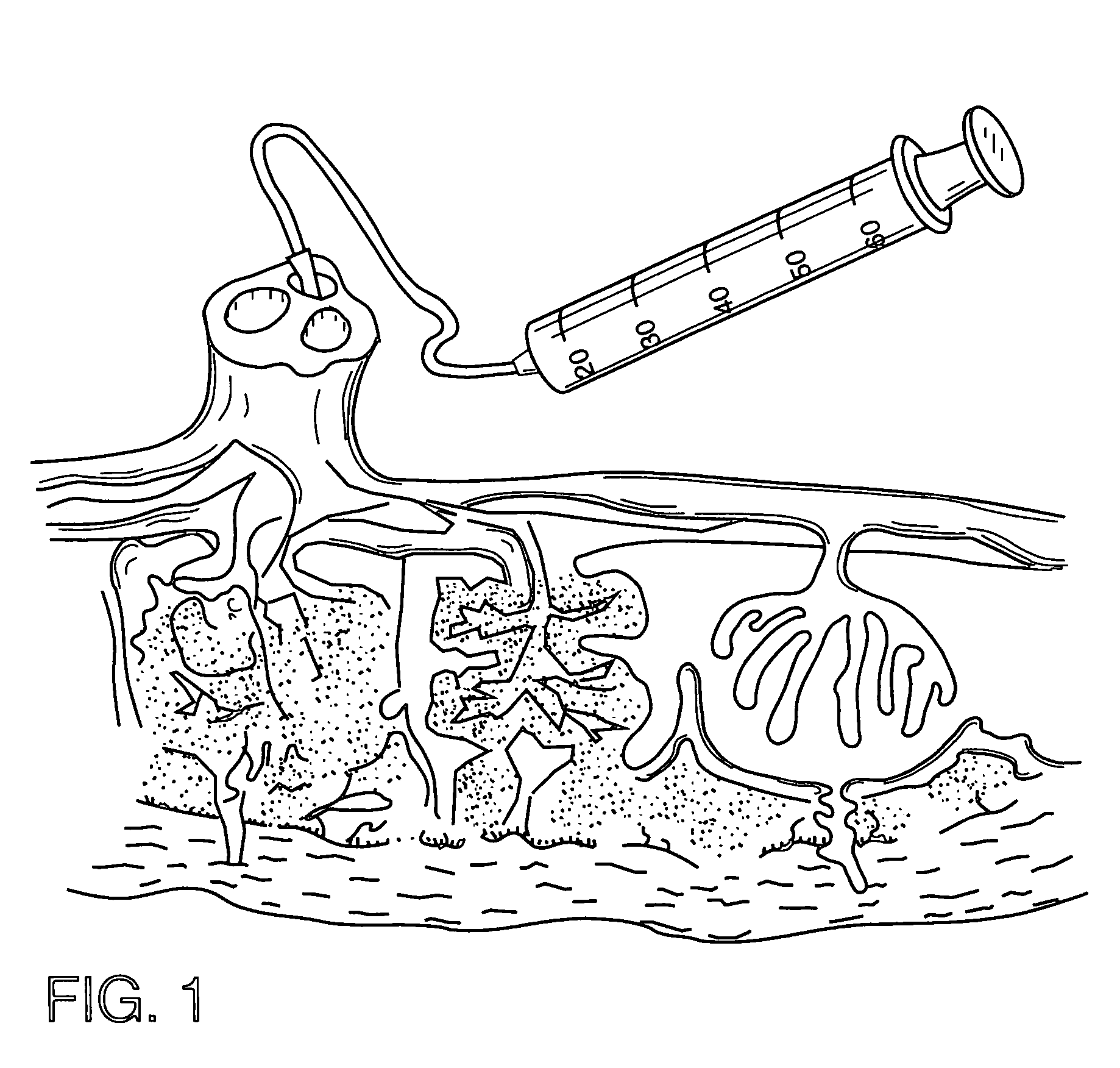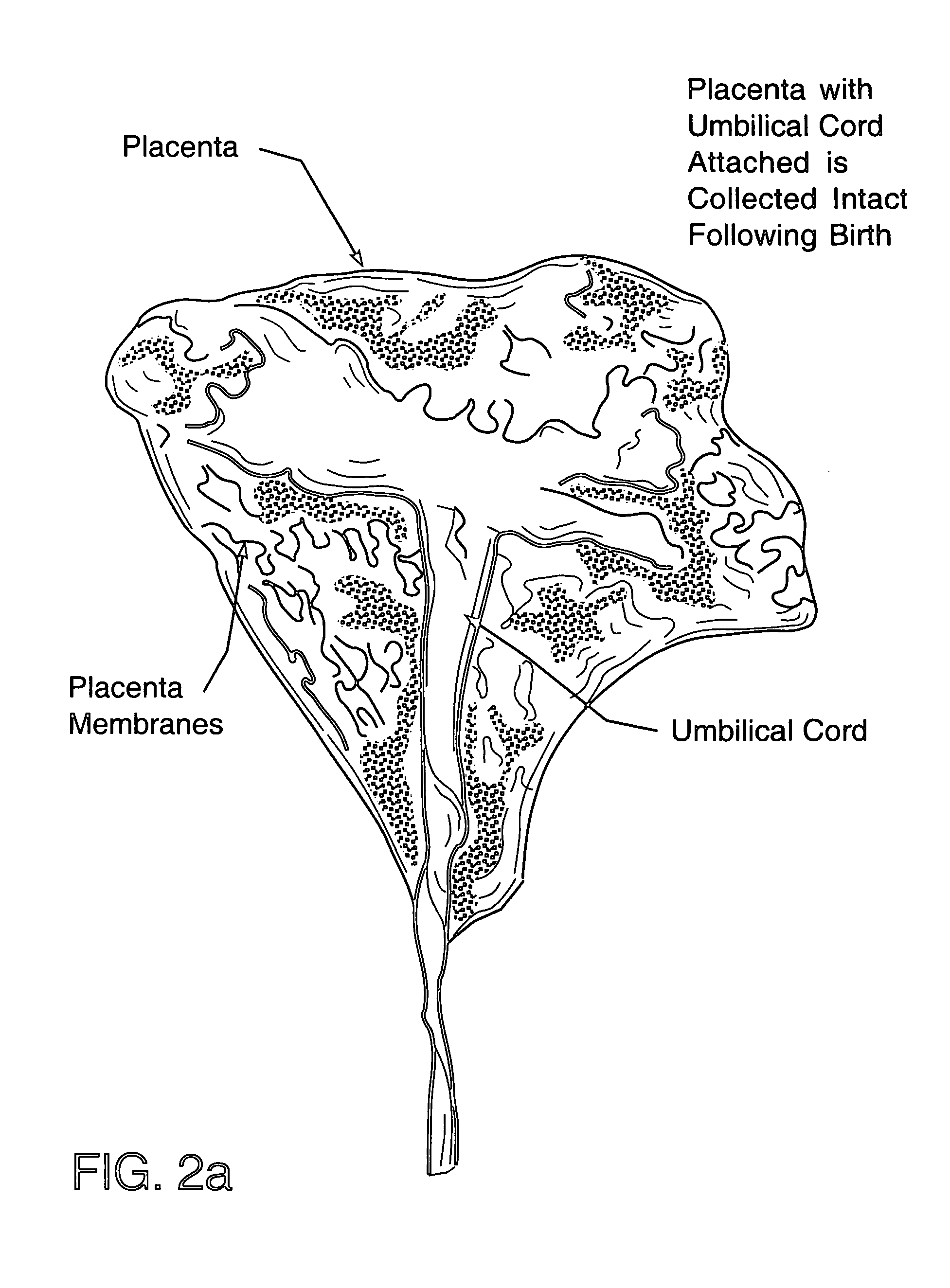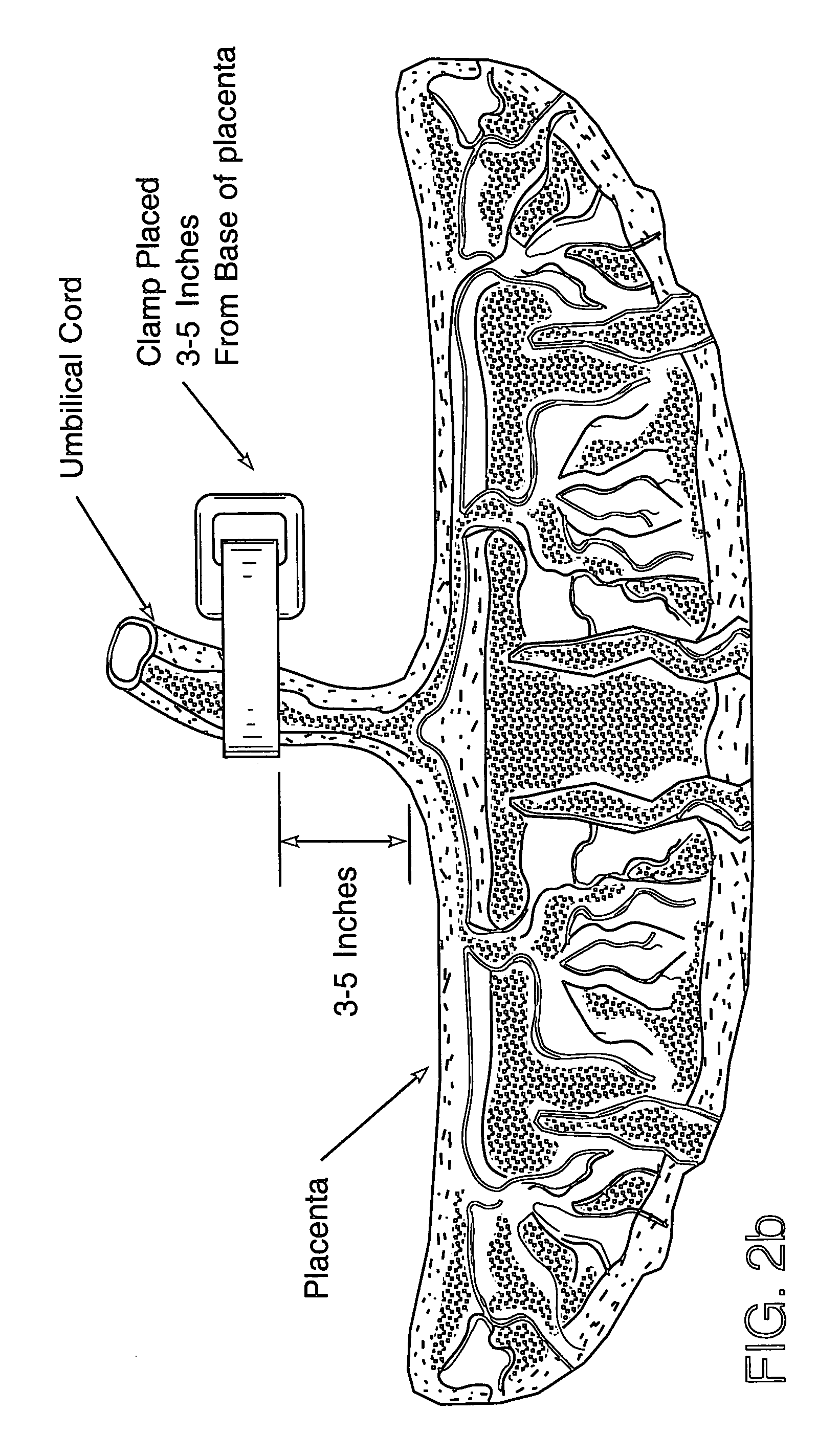Method of collecting placental stem cells
a placental stem cell and collection method technology, applied in the field of stem cell collection, can solve the problems of insufficient cell numbers to reconstitute bone marrow after transplantation, insufficient cell numbers, and difficulty in obtaining sufficient human stem cells, etc., and achieve the effect of good environmen
- Summary
- Abstract
- Description
- Claims
- Application Information
AI Technical Summary
Benefits of technology
Problems solved by technology
Method used
Image
Examples
example 1
[0041] Twenty ml (milliliter) of phosphate buffered saline solution (PBS) is added to the perfusion liquid and a 10 ml portion is collected and centrifuged for 25 minutes at 3000 rpm (revolutions per minute). The effluent is divided into four tubes and placed in an ice bath. 2.5 ml of a 1% fetal calf serum (FCS) solution in PBS is added and the tubes are centrifuged (140 minutes×10 g (acceleration due to gravity)). The pellet is resuspended in 5 ml of 1% FCS and two tubes are combined. The total mononucleocytes are calculated by adding the total lymphocytes and the total monocytes and multiplying this by the total cell suspension volume.
example 2
Analysis of Cells Obtained by Perfusion and Incubation of Placenta
[0042]
WBCTotal# of1000 / mlLym %MID %GRA %VolumeCellsCB10.543.2848.860 ml6.3 × 108(CordBlood)PP12.062.918.218.915 ml1.8 × 108(Placentaperfusate,roomtempera-ture)PP211.756.019.224.830 ml3.5 × 108(Placentaperfusate,37° C.)
Samples of PP were after Ficoll.
Total cell number of PP after Ficoll is 5.3 × 108 and number of CB before processing is 6.3 × 108.
Lym % is percent of lymphocytes;
MID % is percent of midrange white blood cells; and
GRA % is percent of granulocytes.
[0043] Cell isolation is achieved by using magnetic cell separation, such as for example, Auto Macs (Miltenyi). Preferably, CD 34+ cell isolation is performed first.
[0044] Materials and Methods
[0045] Placenta donors were recruited from expectant mothers that enrolled in private umbilical cord blood banking programs and provided informed consent permitting the use of the exsanguinated placenta following recovery of cord blood for research purposes. These d...
PUM
| Property | Measurement | Unit |
|---|---|---|
| volume | aaaaa | aaaaa |
| volume | aaaaa | aaaaa |
| volume | aaaaa | aaaaa |
Abstract
Description
Claims
Application Information
 Login to View More
Login to View More - R&D
- Intellectual Property
- Life Sciences
- Materials
- Tech Scout
- Unparalleled Data Quality
- Higher Quality Content
- 60% Fewer Hallucinations
Browse by: Latest US Patents, China's latest patents, Technical Efficacy Thesaurus, Application Domain, Technology Topic, Popular Technical Reports.
© 2025 PatSnap. All rights reserved.Legal|Privacy policy|Modern Slavery Act Transparency Statement|Sitemap|About US| Contact US: help@patsnap.com



